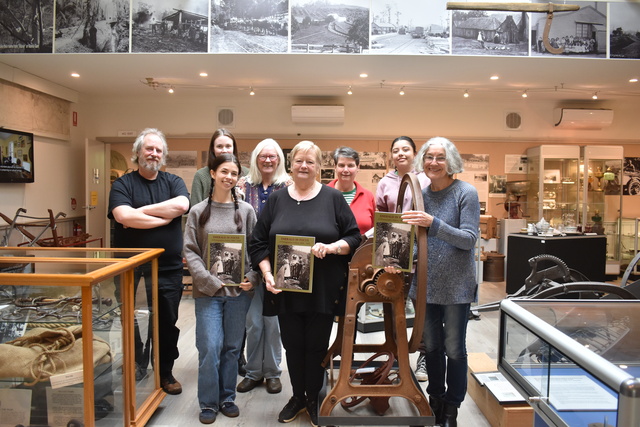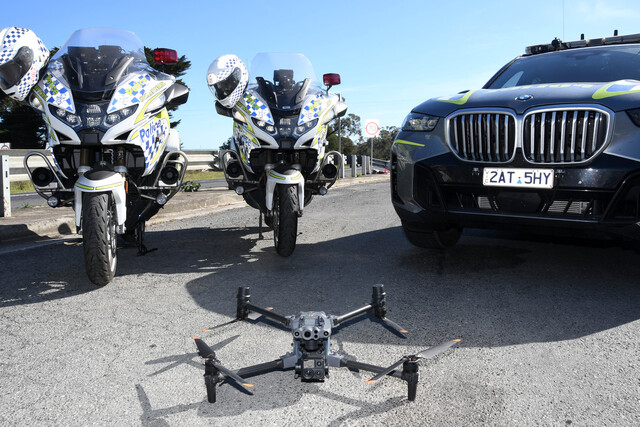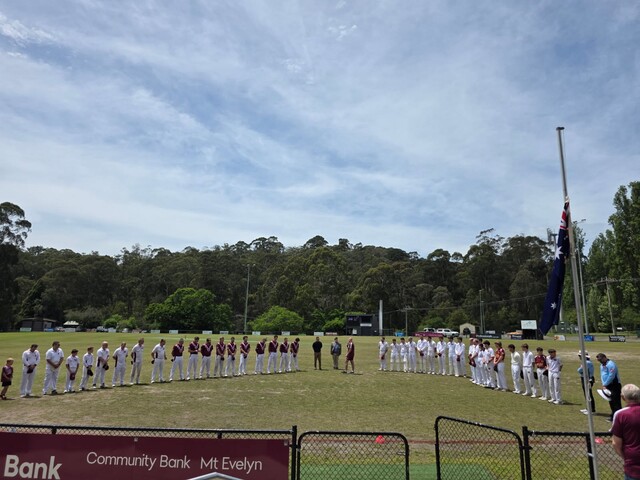The Emerald Museum has re-released ‘Emerald in Focus: A Photographic History 1858–1958’, a book that captures the first hundred years of European settlement in the region.
The book was originally published in 2006 which quickly sold out and has been long requested by the community.
The museum secretary Anne Carter said the decision to reprint the book followed years of community interest.
“It was very popular, and it sold out quite quickly,” Ms Carter said.
“Since then, people have been at us to reprint it, which we have done recently, and we’ve corrected some mistakes that people have noted over the years and also added an index, which makes it much more useful for researchers.”
The book features photographs spanning key periods in Emerald’s history, all the way from the 1858 gold rush through to the rise of the timber industry and small farming communities that shaped the region.
“It’s a collection of really good photographs, and it relates to various themes,” Ms Carter said.
“The gold rush wasn’t as big as Ballarat or Bendigo and it petered out quite quickly, but it brought settlers to the area. Some left when they found there wasn’t much gold, but others stayed and became small farmers. The timber industry was also huge in the Dandenongs during the second half of the 19th century because Melbourne was growing so quickly.”
Ms Carter said the book also reminds readers of the remarkable horticultural history of the area, particularly the Nobelius Nursery.
“The Nobelius Nursery started in the 1890s and at its peak was the largest in the southern hemisphere,” she said.
“This museum is located in the remnants of that nursery land, and it’s something people still find surprising.”
Museum president Pauline Murphy, who is the great-granddaughter of Nobelius founder Carl Axel Nobelius, said the re-release was a meaningful continuation of local legacy.
“It’s a very special legacy,” Ms Murphy said.
“People are really impressed that there are still descendants of the family here, and I’ve learned things about my family that I didn’t know before I started volunteering.”
Ms Murphy said the process of reprinting the book was not without challenges.
“Because it had been done back in 2006, we had difficulty finding some of the photos to rescan and highlight to make them a bit clearer,” she said.
“It probably took us two years, maybe longer, to finally pull it all together, but the result is something the committee is very proud of.”
The museum held a launch event for the reprint in September, which Ms Murphy described as a special moment for the committee.
“Just seeing it reprinted and being able to acknowledge the work that everybody’s done before was the highlight,” she said.
“We feel like it’s our duty to the community, and we’ve fulfilled that, because this book was missing, it was out of print and now it’s there again.”
Volunteer and committee member Anne Deschepper said people in the area often find personal connections in the pages of the book.
“When I’m looking through the book, I notice surnames or street names and go, ‘Ah, that’s how that place got its name,’” Ms Deschepper said.
“It brings a sense of warmth and connection to the area. As a local, it gives you insight and joy to see those familiar names and places.”
She said the museum’s vast archives continue to inspire new discoveries.
“There’s always a new question to answer that comes up all the time,” Ms Deschepper said.
“The documentation and artefacts we have here are amazing, and they’re potential sources for answering questions but also the source of new ones.”
Committee member Chris Eichler said the museum welcomes new volunteers and values the diversity of experience they bring.
“One of the big pluses that any volunteer can bring to us is their life experience,” he said.
“It’s not about skills it’s about having lived and experienced things, that helps us identify and understand the items we have here.”
Ms Murphy said the museum plans to continue building on this momentum, with hopes for more exhibitions and possibly an updated companion volume to Emerald in Focus in the future.
The new edition is now available at the Emerald Museum and Grace and Louie Booksellers in Emerald. It includes corrected details and a newly added index to help researchers and local historians.







